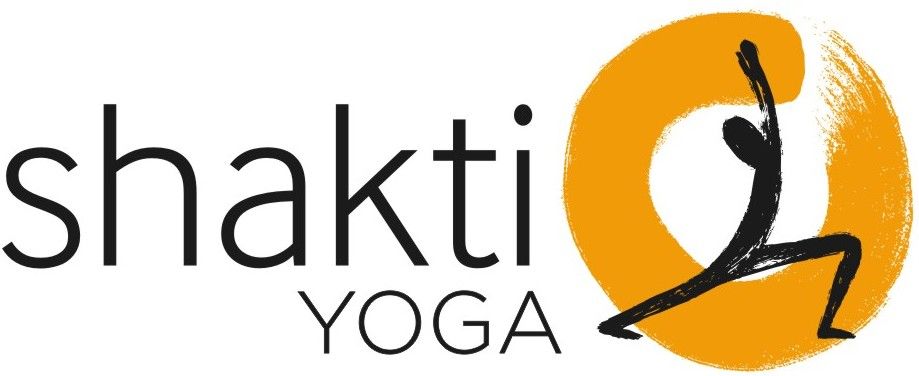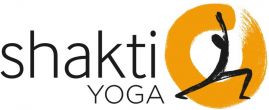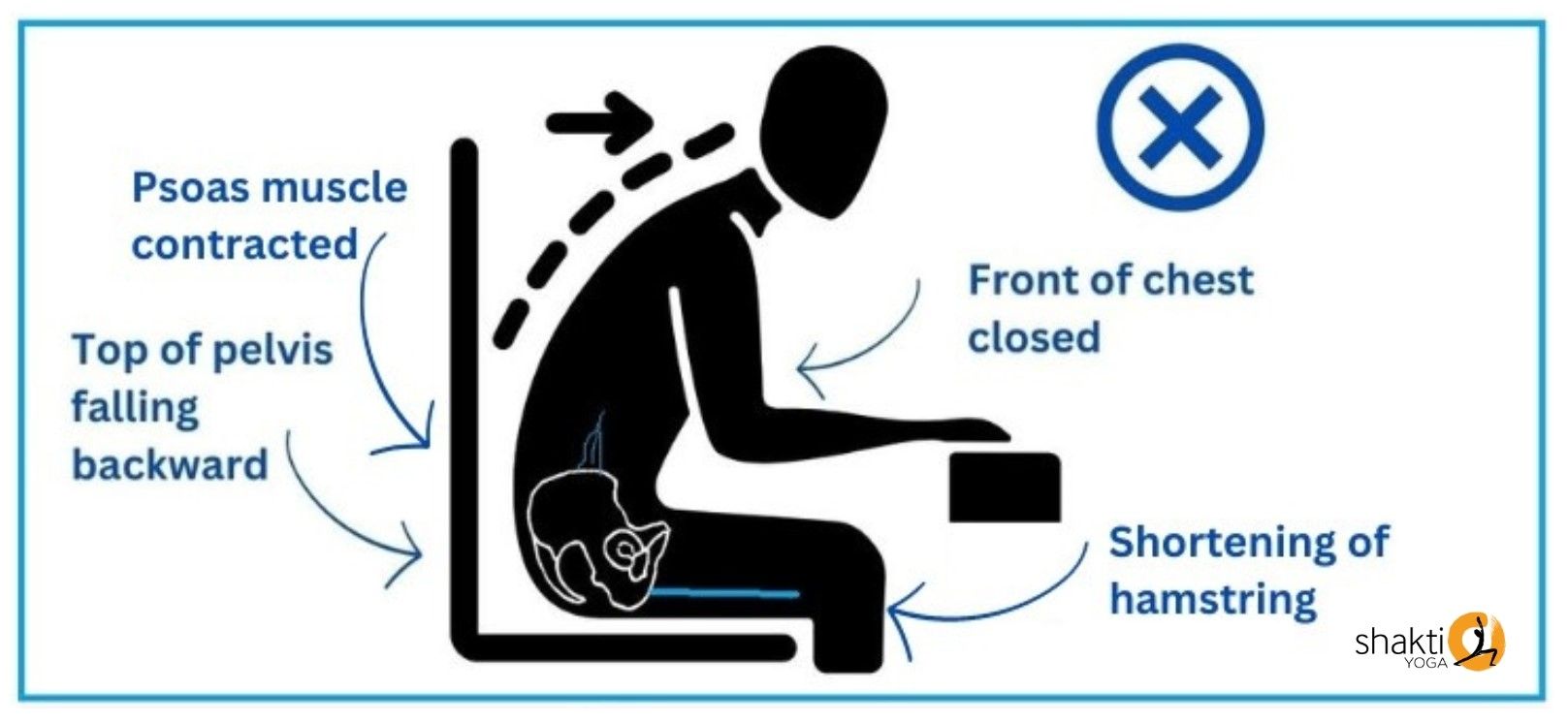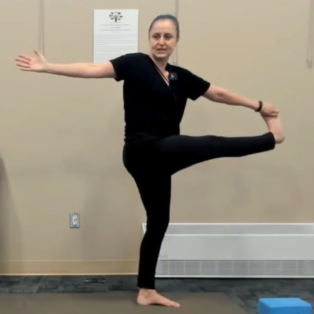The Psoas, Sitting, and Stress Connection
Understanding the sitting-psoas-stress circuit, and how to disrupt it.
Sitting has been dubbed the “New Smoking” in recent times due to its negative wellness impact.[1] There are a few obvious reasons for this. One being that if you are sitting you are obviously not moving your body, which is necessary for all our tissues, organs, and systems to function optimally. Secondly, unless one is carefully paying attention to the position of the pelvis when seated, the low back can experience undue pressure. This is not helped by the fact that sitting is often a workplace related “activity” that can be associated with job stressors.
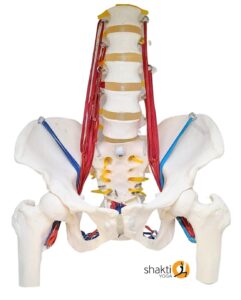
The potentially negative health impact of sitting however extends beyond skeletomuscular mechanics to nervous system function. This is due to a combination of the shortening of the psoas muscle, and the resulting muscle tension which occurs when sitting for long periods. Psoas tension impacts nervous system response. To understand this connection requires an awareness of human nervous system evolution, and the anatomy of the psoas muscle itself.
Humans are mammals. We have evolved to survive. For most of our time on earth survival mainly meant avoiding becoming a meal for larger animals. To this end, being happy and relaxed would be much less of a survival requirement than being alert to danger. As a result of this evolutary pressure we arrive in the modern day with a nervous system more responsive to possible signs of danger than beautiful things like relaxing scenery. Our nervous system moves back and forth between two states of activation. Sympathetic nervous system activation (SNS) which makes us alert to potential threats in our environment. The SNS triggers our body to prioritize functions that enhance our ability to fight or flee, sometimes resulting in unconscious safety postures such as flexing forward to protect vulnerable organs. Parasympathetic nervous system activation (PSNS) signals the body to relax, turn off protection responses, and focus resources on optimal cell, organ, and system function. Ideally, we spend more time in PSNS, only moving into SNS activation when the body truly requires this response.
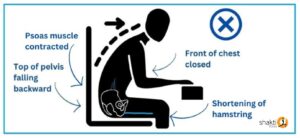
Our ancient nervous system activation is inextricably tied to the psoas muscle, the strongest hip flexor. Psoas contraction is a major part of bringing the body into a flexed protection posture if danger is detected in our environment. The body and mind are in constant communication with each other. Just as a thought can trigger our body to prepare for danger, our body can also signal protection information back to the brain. If the psoas is shortened due to long periods of sitting, the nervous system can become confused and may assume this muscle is shortened because a protection response is needed. This means the body can trigger a low-level fight or flight response simply because the psoas is slightly flexed and tense. The fact that sitting poorly also usually results in a slightly flexed upper body adds to this effect. Upper body flexion results in shallow breathing due to decreased space for lung expansion. This becomes a second signal to the brain that our environment may not be completely safe.
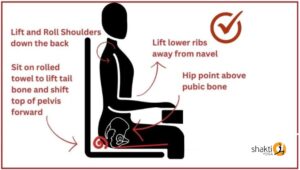
We can reset the nervous system by sitting in ways that do not create psoas tension, and allows for deeper breaths.
The great news is that simply being aware of the connection between sitting, psoas, and stress provides us with an opportunity to use movement, posture, and breath awareness to calm the nervous system. A simple three stop process that you can do at work or home when sitting and feeling anxiety is described below.
Three Step Immediate Psoas Reset
- Step 1: Upper Body Posture Reset
If the upper body is slumped forward there will not be enough space for effortless expansion of the lungs. The brain associates shallow breathing with a need for protection response. Opening the upper body opening will allow for deeper breaths. If you are sitting and feel tension the first thing to do is lift the chest. Roll the shoulders down the back, lifting the bottom ribs away from the naval.
- Step 2: Breath Awareness
Now that the upper body is open, bring the palms to the lower ribs on each side. Visualize the breath pouring in through the nostrils and spreading the bottom of the lungs wide before slowing filling the rest of the lungs. You will feel the breath moving toward the collar bones and lifting the ribs. Keep the front of the body lifted as you drop the hands to the lap, and allow the breath to slowly release through a hanging open mouth. The jaw and face are completely relaxed. Allow the breath to effortlessly leave the body like a slowly deflating tire. Repeat for 3-5 breaths or more. Do this anytime you need to reset body, breath, and mind.
- Step 3: Psoas Release
Psoas lengthening can be added to this practice by carefully rocking the top of the pelvis to forward as you breathe deeply into your lifted upper body. This will simultaneously realign the spine for larger breath space and uncurl the psoas. For some, placing the sit bones on a rolled towel as the pelvis rocks forward can help guide the movement. The goal is to have the pointy bones at the front of the hips hover above the pubic symphysis bone (See Image).
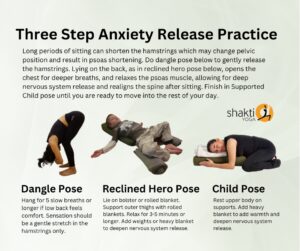 Three Step Psoas Maintence Practice
Three Step Psoas Maintence Practice
While the above 3-point practice will be helpful in a moment of tension, a more dedicated practice for psoas maintence will further enhance its effect. Sitting creates tight hamstrings which can impede the pelvic forward movement. Giving some attention to releasing the hamstrings should be done on a daily basis. Dangle pose (See image) will do this. Gentle restorative back bend positions will also allow the front body muscles to lengthen for easier breaths, and assist the psoas to release. One particularly effective pose is reclined hero. Lie with the back on a bolster (or rolled blanket), bring the soles of the feet together with bent legs falling open to the sides. Support the outer thighs with a rolled blanket. Set a timer for 5-10 minutes. This allows for a full psoas release that will reassure your nervous system that you are safe. It will also lengthen chest muscles to allow deeper breaths to happen unconsciously as you move through day. Finish with child’s pose because nothing calms the nervous system more than relaxing in the same position that you grew in.
A more intensive psoas maintence approach can be found in a Neurogenic Yoga class. Neurogenic yoga triggers a tremor response that allows both recent, and long-held tension, stress, and trauma to be released. Find more information, or to register for one of Bobby’s upcoming Neurogenic classes at this link to Shakti Yoga Method Neurogenic Yoga Classes.
Wishing you a wonderful day of deep breaths and nervous system calm.
[1] James Vlahos, Is Sitting a Lethal Activity? New York Times Magazine, April 12, 2011
